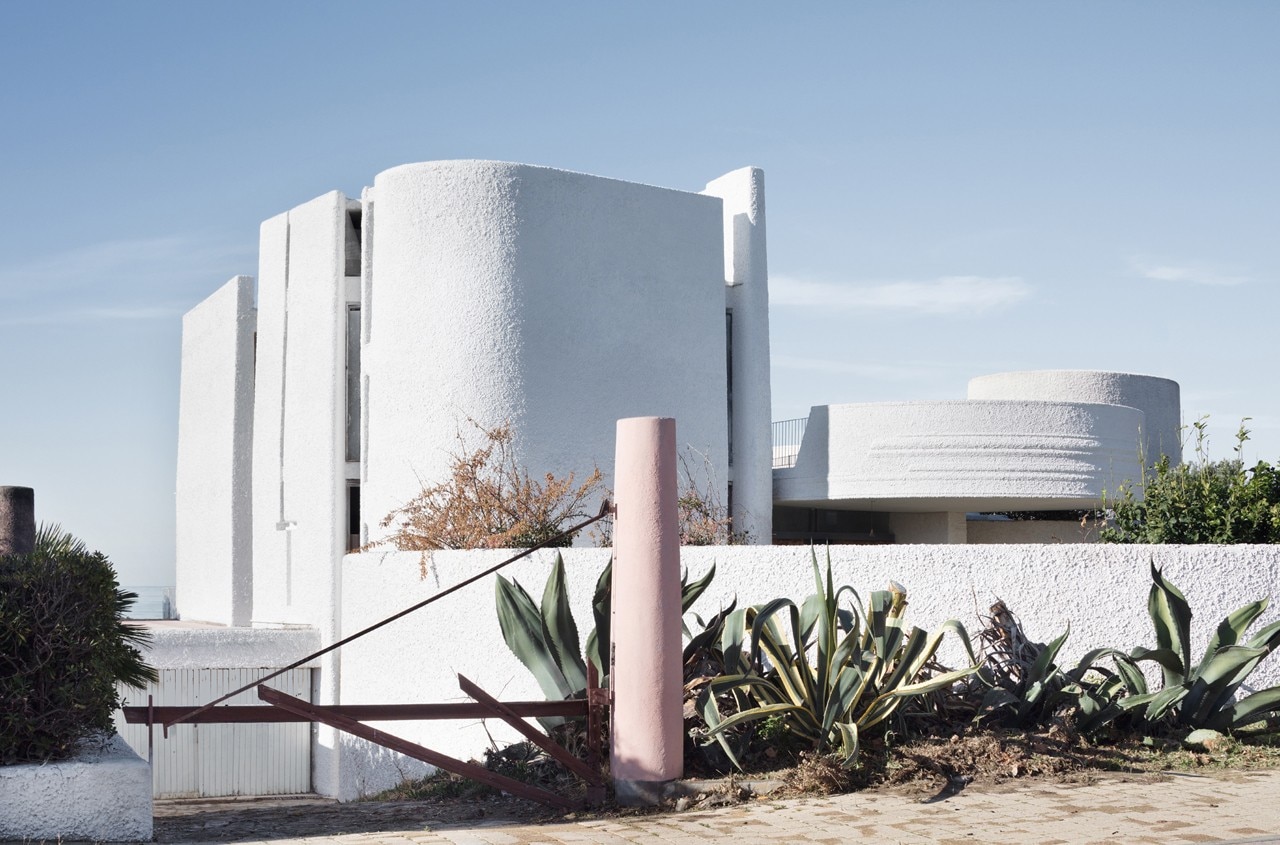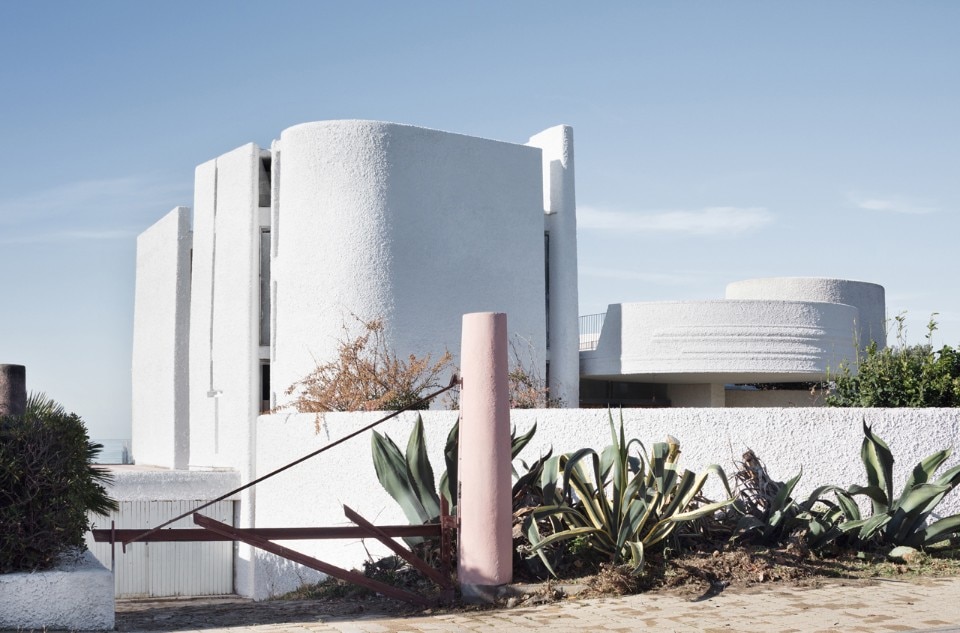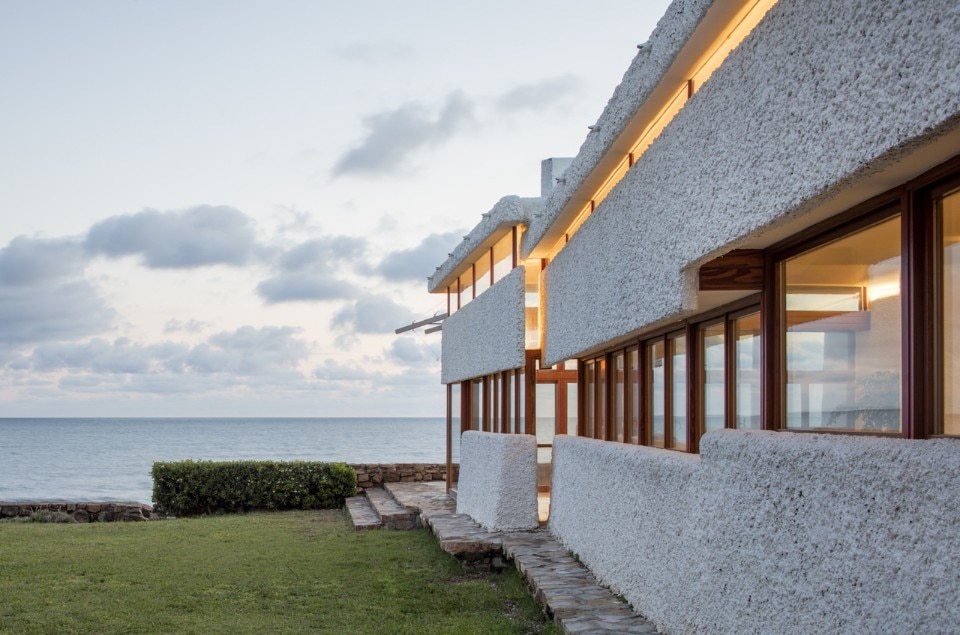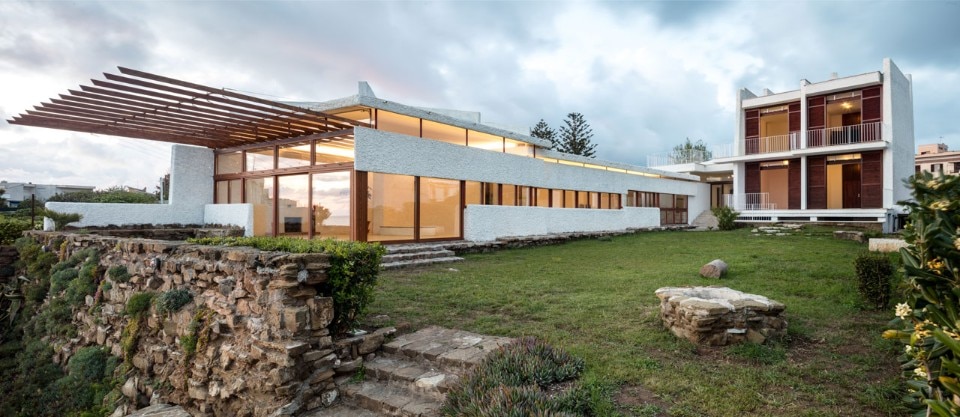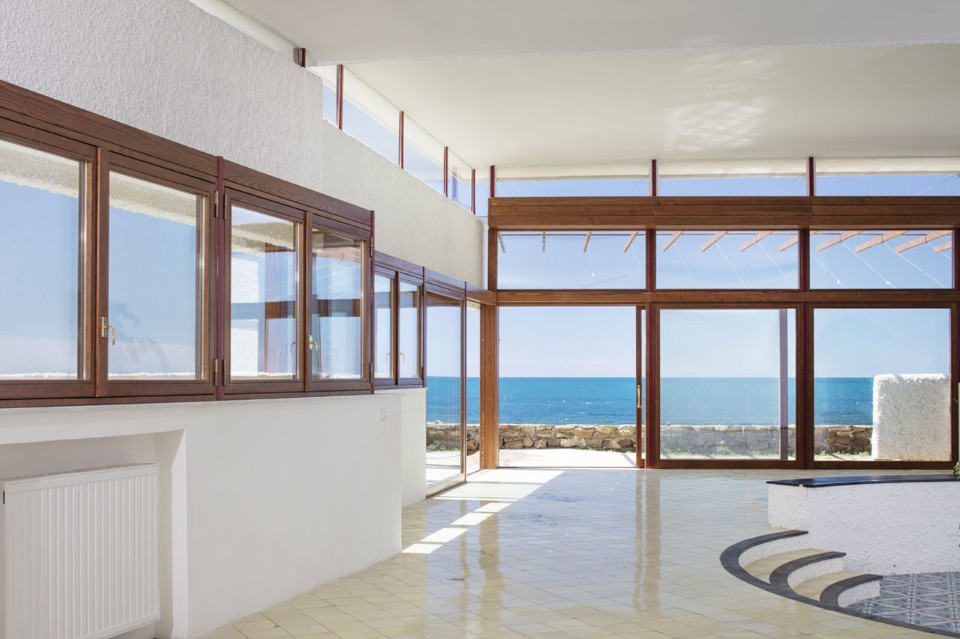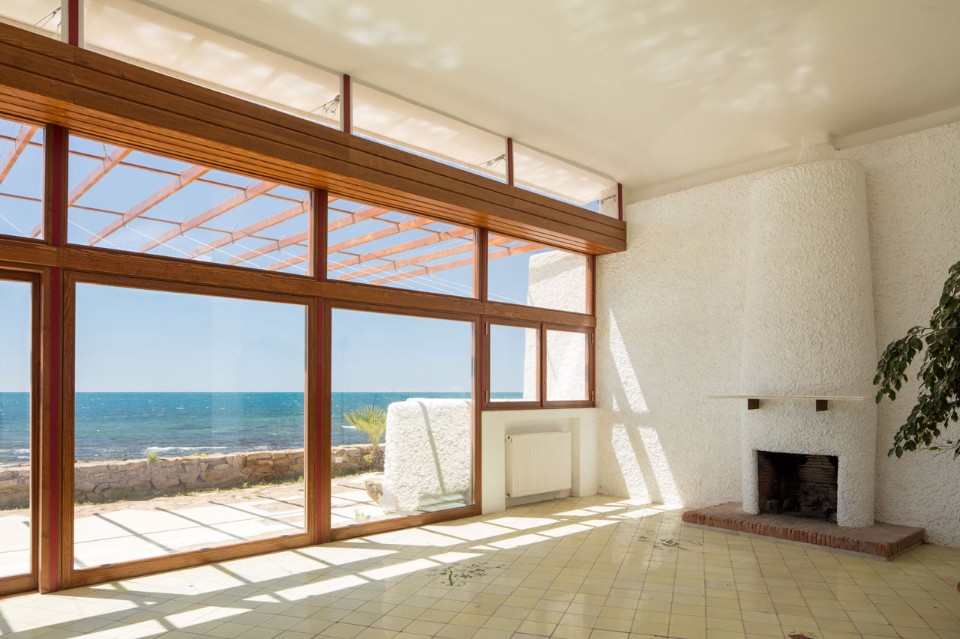Commissioned to Luigi Moretti by journalist Francesco Malgieri for his daughter Luciana Pignatelli, Villa Saracena was completed in 1957. Built in S. Marinella, on the Lazio coast in Italy, the villa is defined by deep overhangs and a circular tower joined to a linear body with panoramic openings overlooking the Mediterranean Sea.
The distinctive element is the rich texture of the walls, made with a complex technique of overflowing with a mixture of marble powder, white cement and slaked lime applied with a broom by a single craftsman. As the Roman architect wrote back in the days, the effect contributed to creating an ‘emotional’ architecture, through an abstraction of the facade that dissociated the real structure from the ‘ideal’ one:
“The whole house is as if immersed in a dreamlike atmosphere. The surface of all its walls is rough as if it had been stuck for centuries in a strange and luminous sea. In the House of Santa Marinella one can directly read the emotional qualities of the walls as such, that is, as weight, as a tapered design with decreasing loads, as a force of support and division of spaces.”[1]
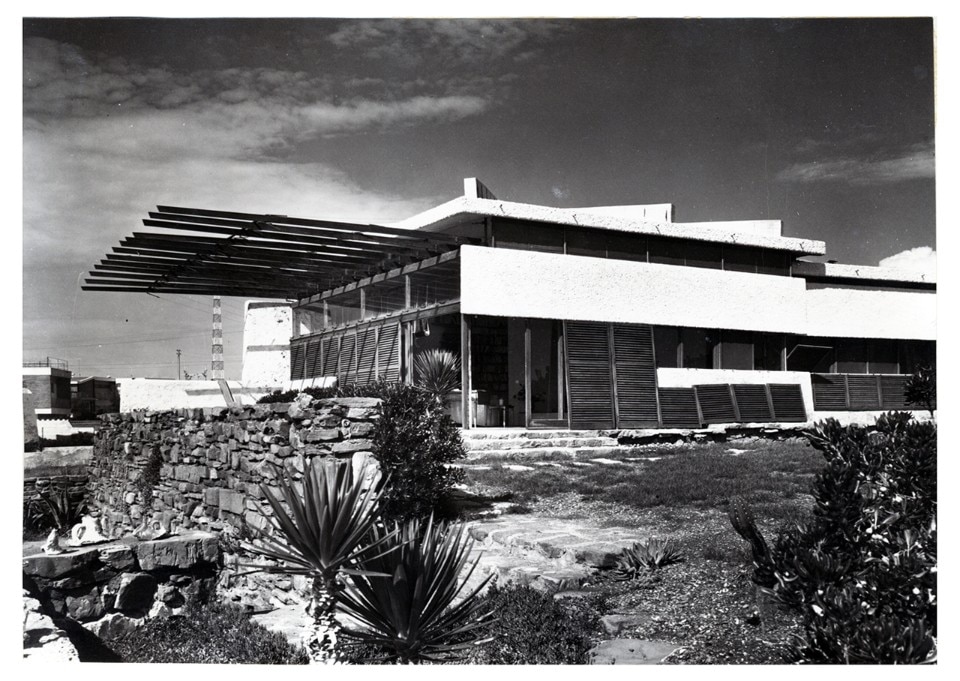
The villa was subject to monument constraint in 2010 by the Ministry of Cultural Heritage and, after years of progressive degradation, in 2017 began the restoration work entrusted to the architect Paolo Verdeschi and his collaborators, the architects Flavio Fiorucci, Giulia Seppiacci and Giulio Valerio Mancini. The complexity of the restoration came from having to deal with a modern building. The original plans and photographs were there, therefore reconstruction could have the same exact image as the old one – but it was necessary to clearly reveal what was new and not old, following the school of Italian-style restoration, which categorically rejects the historical falsehood.
As the architect told Domus, the frontal canopy, which had collapsed, the perimeter veil, the internal doors and windows and the plaster have been reconstructed. For the latter, chemical analyses were carried out to understand the stratigraphy over time. The application of a plastic quartz in subsequent years was detrimental, preventing the wall from transpiring and causing the cladding to ‘explode’. The succession over the years of major structural interventions has further complicated the restoration work, which, in addition to the overall structure has included the recovery of the garden and the grotto clad in green mosaic, hidden under piles of rubbish.
The architect Costanza Magli has created the new gate of the grotto: the original one by American artist Claire Falkenstein was by now a rusty wreck, almost disappeared. The interiors have been rehabilitated, together with the doors and shutters, the windows, parts of the kitchen, and flooring has been restored. For enthusiasts, the villa can be visited during some extraordinary openings organized by the network of Historical Houses of Lazio.
- 1:
- "Luigi Moretti, Architetto del Novecento", curated by Corrado Bozzoni, Daniela Fonti, Alessandra Muntoni. Ed. Gangemi Editore, 2009
- Restoration:
- Paolo Verdeschi
- Team:
- Flavio Fiorucci, Giulia Seppiacci, Giulio Valerio Mancini
- Gate and furniture:
- Costanza Magli
- Completion:
- 2019


